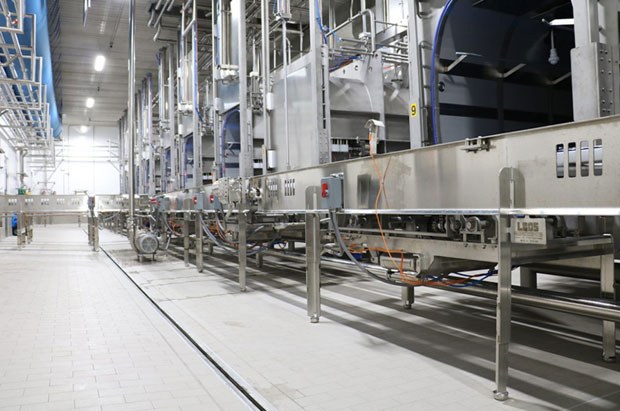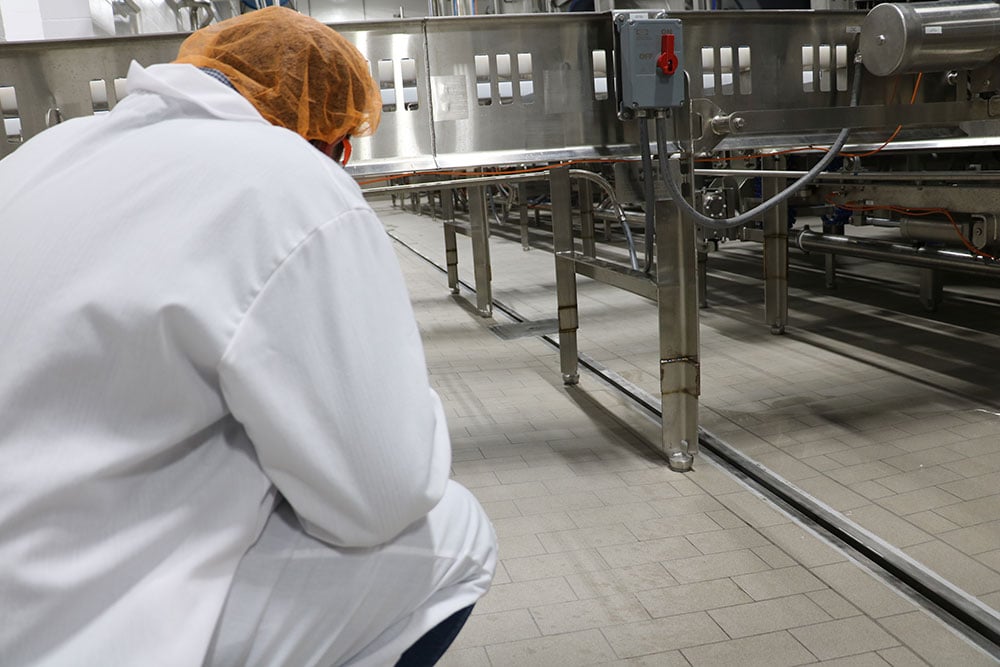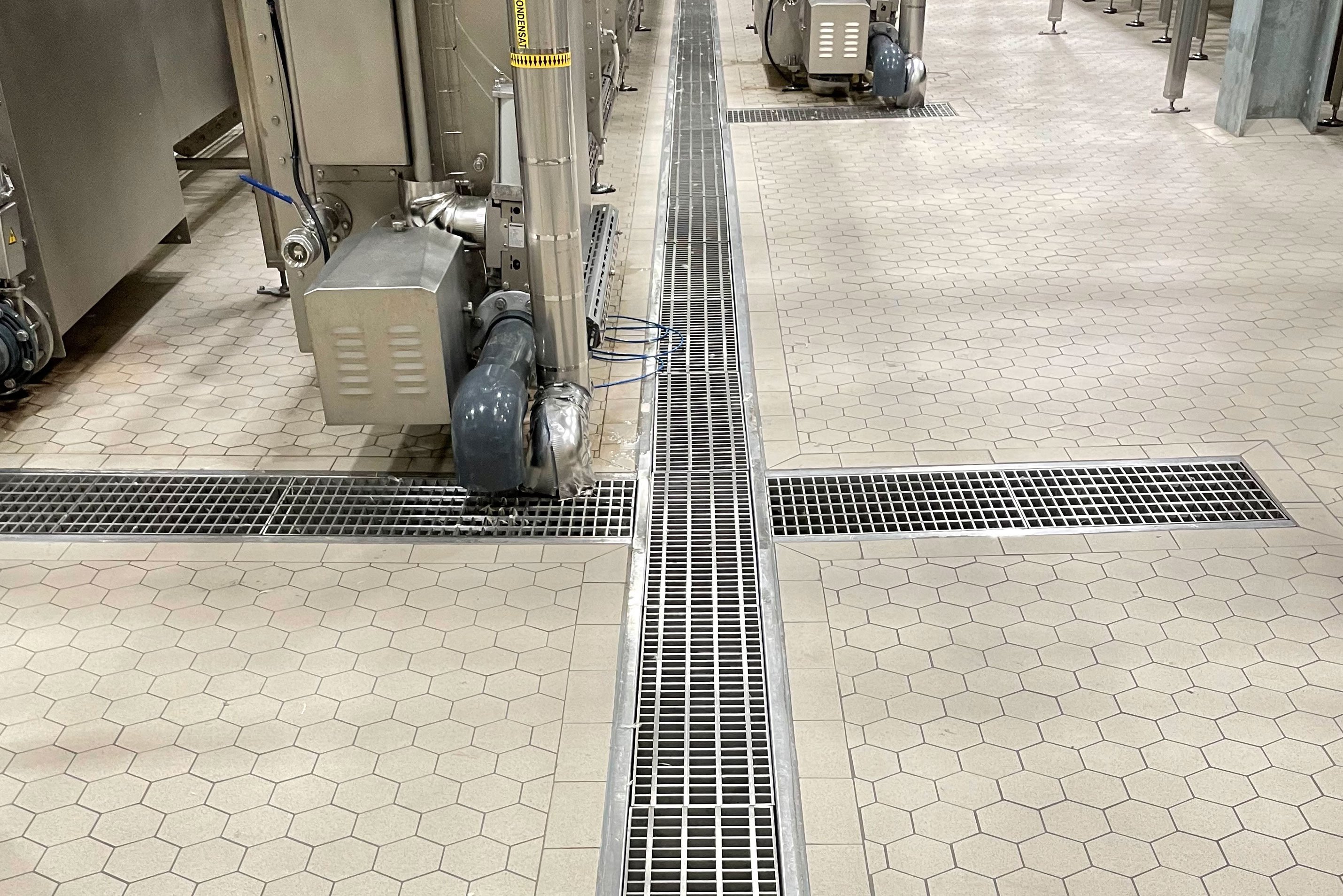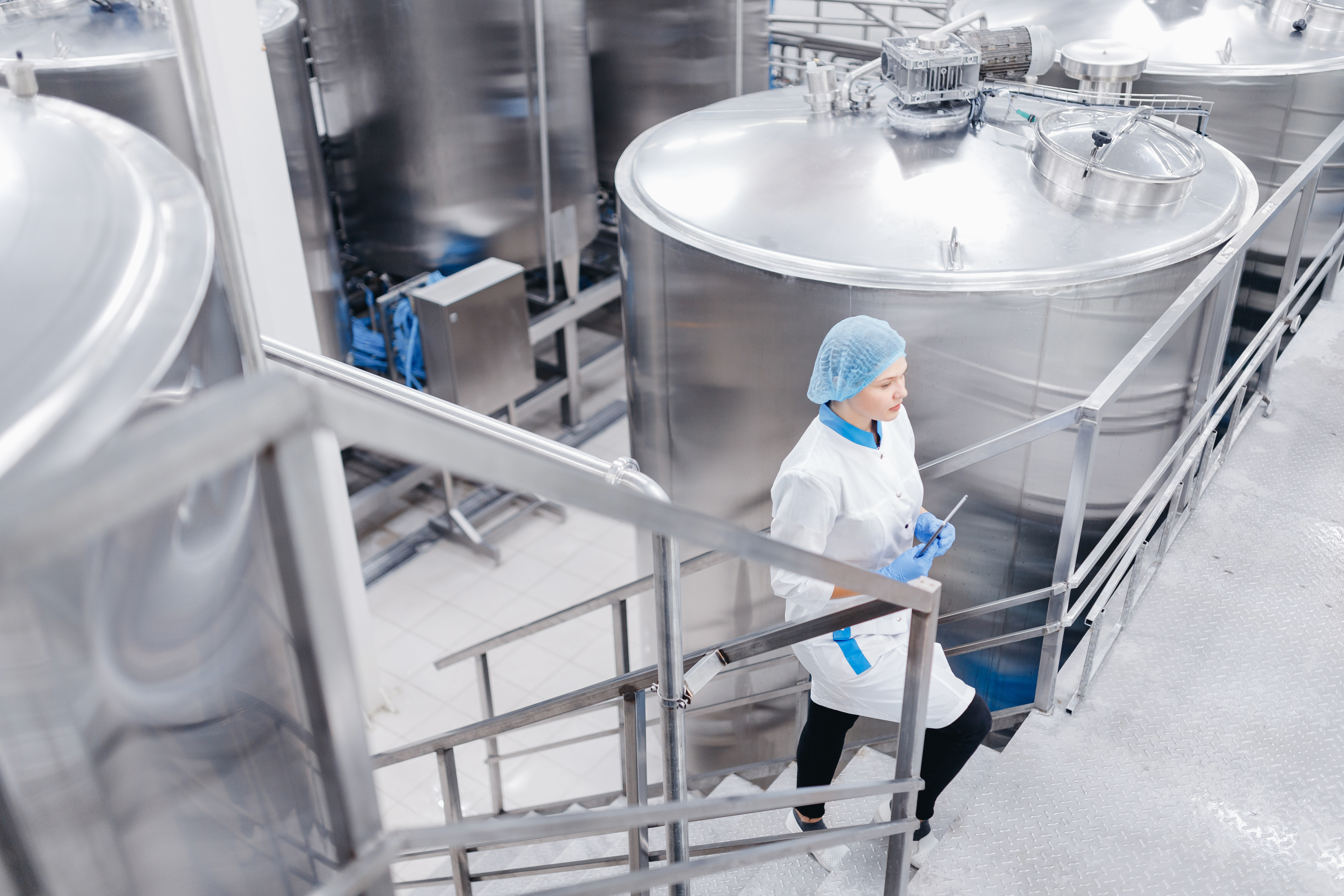No matter how insignificant certain aspects of food facility design may seem, they can have a massive impact on safe working conditions and operational functionality.
Facility setup and operations are required by law to meet strict guidelines, which are enforced by agencies like the USDA and FDA, and these can vary depending on the type of food facility.
There are, however, several key components that remain consistent throughout the food and beverage manufacturing industry. Here’s what you need to know.
FLOORING

For food facilities, flooring isn’t just about appearance; it’s about function. Flooring material needs to be durable, slip-resistant, and, most importantly, sanitary. Facility floors should also be easy to clean and capable of withstanding the daily wear and tear they’d be subjected to within a processing facility.
Some basic requirements of food-grade flooring include:
- Impermeability to liquids, including oils
- A seamless finish with no cracks or imperfections
- A seamless transition between floor and wall (coving)
- A grade sloped toward floor drains to prevent standing water
Different types of food production facilities will require different types of flooring. Coated concrete is the most common, with food-grade epoxy flooring being one of the most popular options throughout facilities.
Urethane coatings are another option, popular for meat and poultry processing facilities, while methyl methacrylate (MMA) coatings are used in cold storage rooms. Antibacterial additives can be mixed into floor coatings in order to further reduce the risk of contamination through the facility.
CONDENSATION
When condensation forms in a food and beverage facility, it is usually a sign that something is wrong with refrigeration units, and humid air is getting inside the production area.
This can be especially hazardous in food facilities, as water vapor can carry bacteria and other pathogens from location to location. As it settles as condensation, surfaces, products, and even workers can become contaminated, with the potential to spread it even further.
The most common cause of condensation is that the insulated panel in a refrigeration unit has an insufficient vapor barrier. It can also occur due to vapor pressure issues, air infiltration, or even exfiltration of air between different rooms.
Being aware of how these issues begin and how they can be prevented is critical, as it will help you to better plan your facility design.
SANITARY DRAINAGE

Drainage is one of the most critical parts of any facility, especially food facilities, and should never be overlooked. Floor drainage helps to manage the flow of both water and waste, which keeps facility floors clean, dry, and free from harmful bacteria.
Although many floor drain systems are available, the best solution for food facilities is the slotted trench system (Slot Drain). The FoodSafe Drains product lineup comprises efficient systems made from high-quality, non-porous, food-grade stainless steel, offering exceptional hygienic conditions and lasting durability.
Some of our most popular products, like the 6,000 Series and 10,000 Series drains, are specifically designed for modern food facility needs.
Unlike traditional trench drain systems, FoodSafe Drains don’t require a grate cover, promoting a cleaner, easier to maintain system, featuring additional time-saving cleaning options, including clean-in-place (CIP) functionality, and our Flush-Flo accessory.
With Flush-Flo, a water line can be connected to the drain system, allowing workers to flush the system during cleaning. This can also be integrated with an automated cleaning system for an even more convenient way to keep your drains clean.
AIR CONDITIONING
Temperature regulation is vital in most food production facilities, especially in those that deal with raw materials such as meats, seafood, eggs, and other foods prone to bacterial contamination. Without proper air conditioning, food product quality can decrease, causing spoilage and contamination, which create losses.
Ventilation systems must have a high enough capacity so as to prevent condensation or grease from collecting on walls and ceilings.
You need to take the time to ensure your air conditioning system is not only sufficient for the facility, but that it meets USDA and FDA guidelines as well. Doing so is vital in helping to maintain food and beverage product quality and is also necessary for worker comfort.
SANITATION SYSTEMS
Without a high-quality, well-functioning sanitation system, contamination is inevitable in any facility, but especially so in the food and beverage industry. Food products are highly prone to bacterial contamination, which puts consumers and workers at risk, as well as a brand’s reputation.
It’s important to research systems that are reliable and effective, as well as those that can take care of your whole facility as it exists today and grow with it into the future. You also need to take federal guidelines into account, as there are specific features a system must have and standards it must abide by in order to comply.
WALLS
The walls of a facility are just as important to consider as flooring. They can be subject to extensive wear and tear, from daily equipment traffic to constant chemical exposure. They must be designed and made from materials that can withstand all of these things without suffering severe damage.
Like floors, walls must also be sealed and impermeable to liquids and seamless in order to prevent bacterial growth. Walls must also be free of rough surfaces or projections that might make them difficult to clean.
For more information on wall construction and coating, consult the FDA’s guidelines.
LIGHTING
Proper facility lighting is important to both safety and quality control in food and beverage facilities. Any improperly lit areas can create hazards for workers — strobing fluorescent bulbs can cause headaches and eye problems, dark areas may harbor unseen tripping or slipping hazards, and dim conditions may cause a lapse in product quality.
FDA lighting guidelines include intensity, bulb size, placement, number of fixtures, and more. Lighting should also be easy to clean, durable, and offer sanitary properties to maintain cleanliness.
Energy efficiency is also an important consideration, as facilities that observe good environmental stewardship have a better general reputation among consumers. Energy efficiency is also fiscally responsible, helping you cut down on costs and reallocate those funds to other areas of the facility.
DESIGN MATTERS FOR FOOD FACILITIES
These seven areas are generally some of the most important aspects of food facility design, and by ensuring that they’re carefully considered and meet federal guidelines, operational success can be achieved and maintained.
Questions?
If you have any questions about food facility drainage design, feel free to contact us today! One of our drainage experts would be happy to show you what we can offer and how our hygienic drains can help make your food and beverage facility even cleaner.


